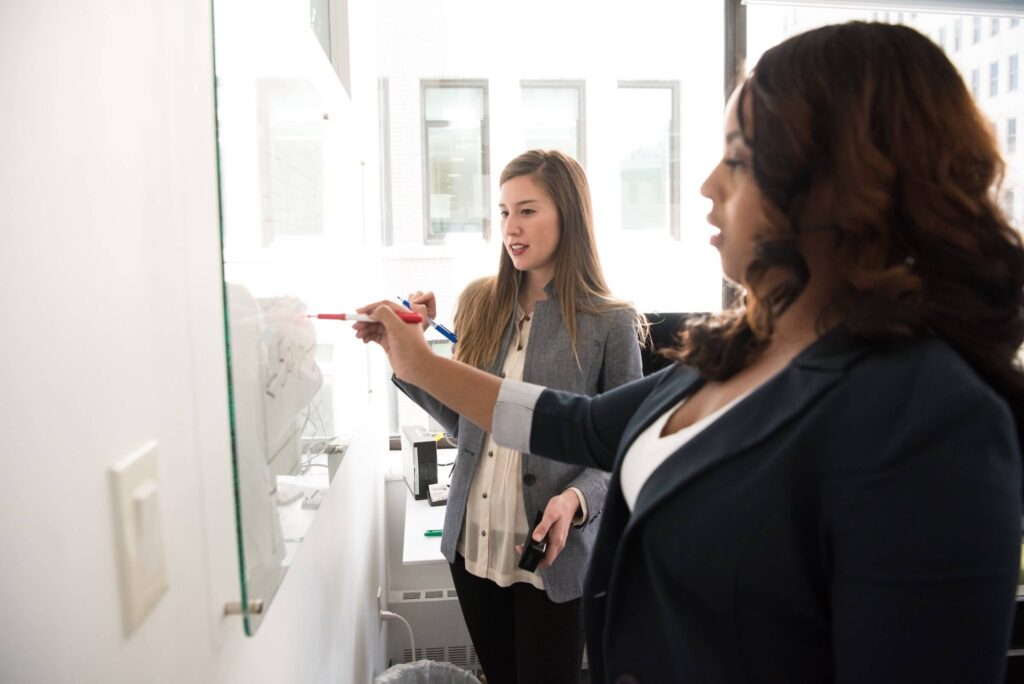Let’s say you’ve created a successful peer-to-peer learning program at your company. Congratulations! If you’ve been up and running for a year or so, you’re likely learning that this is not a once-and-done accomplishment, but a process that will require a fair amount of care and nurturing over the years.
Katie Hawkes and Simeon Franklin at Twitter are familiar with this challenge. You may recall the holistic approach Twitter take with their technical education program. In case you missed the article from a year ago, Simeon, Staff Technical Instructor at Twitter, walked us through the beginning days of Twitter University and how they’ve grown the program since.
Simeon’s been involved with Twitter University since its inception, which has its advantages! Being involved with a project from the beginning gives you the ability to know all of the ins and outs, be intimately familiar with all of the processes, and understand all of the previous decisions in a way that allows you to clearly explain the process to a third party. But now that the program is fairly established, what’s the next logical step?
Listen first
Whenever things seem to stabilize, this is the time for listening. There’s no longer urgent pressure to launch or get a quorum of core users. Now is the time to sit back, listen, and observe.
When Katie Hawkes joined the team in January 2018 as their Learning Program Manager, she was presented with the unique opportunity to come into an already-established program and talk to stakeholders, ask questions, and learn about the entire project in a comprehensive manner. Knowing that she was starting from scratch with regard to Twitter University culture and practices, she went to the source — the stakeholders — to find out how effective they thought the program was.
Katie recognized that while Twitter University courses are attended by engineers, engineering managers were the primary audience. After all, these were the folks who saw the direct impact of the courses in their teams and could give the most insight into which courses worked, and which didn’t.
“The first thing I focused on was meeting directly with engineering managers who had done a significant amount of hiring in the past year,” says Katie. “I asked them about the onboarding process that their new hires went through: how easy was it? were the classes relevant to their new hires’ needs? how quickly were the new hires able to get up-to-speed and be productive on the team?”
“When Twitter University first started, the enrollment process was automated. There was a one-size-fits-all approach with regard to the courses that each new engineer took. Now, we’re moving toward giving managers an easy way to have more of a say in what makes sense for their new hires.”
By listening to the managers about which classes were particularly effective and which seemed irrelevant, she was able to pass this feedback along to the technical instructors, working with them to make the offerings a better fit for new hires and managers alike.
Expand Systematically
When an opportunity for new headcount presents itself, be deliberate in the choices that you make.
In 2017 when Simeon was given permission to expand the team, he recognized that there were a number of positions that could be helpful. But while a new Technical Instructor could help offer a few additional courses, Simeon says hiring a Program Manager helped the program grow holistically.
“It was really clear that this was the role we were missing. Education isn’t just about teaching. It’s about recruiting instructors, managing relationships, and helping develop content, which sometimes requires a global view. Katie’s been able to offer insights that have helped us in our consistency from quarter-to-quarter, where in the past we were more focused on the day-to-day implementation.”
A more holistic view of the program also helped the team assess new opportunities. Instead of structuring courses based on job titles and roles, what if they could offer different courses built around the day-to-day projects and workflow of the new employees?
“Since I was new to the program, when I heard feedback from people about a particular process, my instinct was to ask the rest of the team why we handled something in a particular way,” says Katie. “Often, I wasn’t sure why it was set up in that particular manner, so it’s an opportunity for me to ask questions: what does it mean? why do we do that? who benefits from this process? As a result, I’m able to learn more about the system and why it runs the way that it does. With this information in hand, we’re able to create a smoother, easier to follow process for everyone.”
While it might be tempting to simply make changes to the program unilaterally and keep forging ahead, don’t forget to seek feedback after you’ve made a few initial changes. Hearing how these changes are impacting the new hires as well as their managers is an important part of the iteration process.
Communicate effectively
With change comes a need for increased communication. Make sure your employees understand how any changes you’ve made to the program will impact them and their team.
As the Twitter University team has begun to make changes to the onboarding enrollment process, they’ve worked closely with the engineering managers to make sure everything is clearly communicated to the managers as well as their new hires.
“Rather than just automating the class enrollment and putting classes on new hire’s calendars, we’ve been sending out welcome messaging to new hires,” says Katie. “Every person receives an email that says ‘Welcome to Twitter!’ and explains that we worked with their manager to select the classes that make the most sense to them. This helps mitigate confusion around why they have a full week of onboarding or why these particular classes have been put on their calendar.”
As mentioned above, education isn’t just about teaching. In addition to recruiting instructors, your engineers also need to be on board with embracing the courses to get the most out of them. These simple welcome emails help them do just that.
Katie elaborates: “Giving new hires context as to why they’re attending this class or why this level of onboarding isn’t just to be organized. It helps them be more successful in in class when they know why it is important.”
This additional information brings the focus back to our main goal: helping employees be more empowered in their day-to-day role. Twitter University and other Technical Learning programs aren’t implemented solely for the sake of learning, but to help people acquire the skills and context they need to do their best work.







